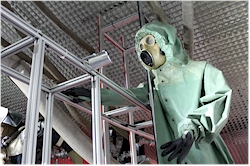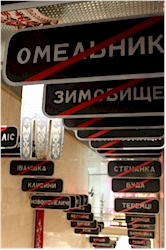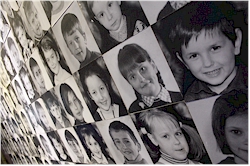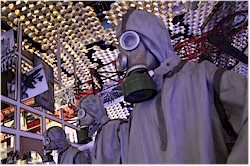|
» Golden Gate » Lavra monastery » St.-Andrew's church » St.-Michael's cathedral » St.-Sophia cathedral » more... » Nat. History museum » Chernobyl museum » Museum of the Great Patriotic War » Pyrohovo Folk museum » State Aviation museum » more... » Andriyivsky usviz » Maydan Nezalzhnosti » Kiev botanical gardens » more...
|
Chernobyl museum
To protect the people living in the area, an exclusion zone had been set up. All inhabitants of the villages and towns in that zone were permanently evacuated. That zone is still in place and nobody is allowed to resettle there. Ironically, the absence of humans has lead to a recovery of wildlife in the area. In order to contain the radiation from the reactor, a concrete sarcophagus was constructed over the infected areas. Maintenance to prevent radiation from escaping will have to continue for many many generations... Tourist excursions to the exclusion zone, including the Chernobyl nuclear plant and the ghost town of Pripyat are organized but for obvious reasons these are severely controlled. It's not possible to do this on your own. Visits are guided and limited in time. You can book them from Kiev. For those who find this a bit too extreme but do want to have an idea about this horrifying disaster there is the Chornobyl museum in the center of Kiev.
The Chernobyl museum in Kiev is quite modern, especially to Ukrainian standards. There are audio guides and information is available in several foreign languages (which is not self-evident in Ukraine).
Address: Khoryva 1 (in Podil area).
Near metro Kontraktova
Picture 1: display inside the museum
|
» getting to Kiev » transport, tours, links,...
|
 The 26th of April 1986 marks the day
of the world's most devastating nuclear disaster in the
Chernobyl (Chornobyl) nuclear plant near the town of Pripyat.
Due to an explosion and subsequent fire in one of the reactors,
radioactive particles were released into the atmosphere and
spread over large parts of Europe. The effects were so
widespread that reindeer in Scandinavia that were contaminated
had to be put down. Lethal doses of radiation soon lead to
casualties among the rescue workers, firemen and people that
were in immediate vicinity of the plant. Inhabitants of
the area received more radiation in a few hours than that they
would normally receive over a whole lifetime, resulting in the
longer run in a higher percentage of people dying from leukemia
and several types of cancer. A surge in the number of
deformed newborns has also been attributed to the incident.
The 26th of April 1986 marks the day
of the world's most devastating nuclear disaster in the
Chernobyl (Chornobyl) nuclear plant near the town of Pripyat.
Due to an explosion and subsequent fire in one of the reactors,
radioactive particles were released into the atmosphere and
spread over large parts of Europe. The effects were so
widespread that reindeer in Scandinavia that were contaminated
had to be put down. Lethal doses of radiation soon lead to
casualties among the rescue workers, firemen and people that
were in immediate vicinity of the plant. Inhabitants of
the area received more radiation in a few hours than that they
would normally receive over a whole lifetime, resulting in the
longer run in a higher percentage of people dying from leukemia
and several types of cancer. A surge in the number of
deformed newborns has also been attributed to the incident. The
museum is located in an old firehouse. As soon as you
enter, the tone is immediately set in the stairway with
roadsigns of all the towns and villages that had to be evacuated
in the aftermath of the accident. The residents had to
abandon all their belongings never to return again to the place
where they grew up. There is of course a proper
explanation about the nuclear plant and the accident itself but
the exhibition does not shy away either from the terrible
consequences of the disaster: diseases, cancer, deformed animals
and humans, abandoned homes,... it can be quite shocking and
confrontational. The rescue workers and firemen who fought
to stop the catastrophe and paid for this with their health and
some with their live are considered heroes here. Their
actions have a prominent place in the exposition.
The
museum is located in an old firehouse. As soon as you
enter, the tone is immediately set in the stairway with
roadsigns of all the towns and villages that had to be evacuated
in the aftermath of the accident. The residents had to
abandon all their belongings never to return again to the place
where they grew up. There is of course a proper
explanation about the nuclear plant and the accident itself but
the exhibition does not shy away either from the terrible
consequences of the disaster: diseases, cancer, deformed animals
and humans, abandoned homes,... it can be quite shocking and
confrontational. The rescue workers and firemen who fought
to stop the catastrophe and paid for this with their health and
some with their live are considered heroes here. Their
actions have a prominent place in the exposition. 
